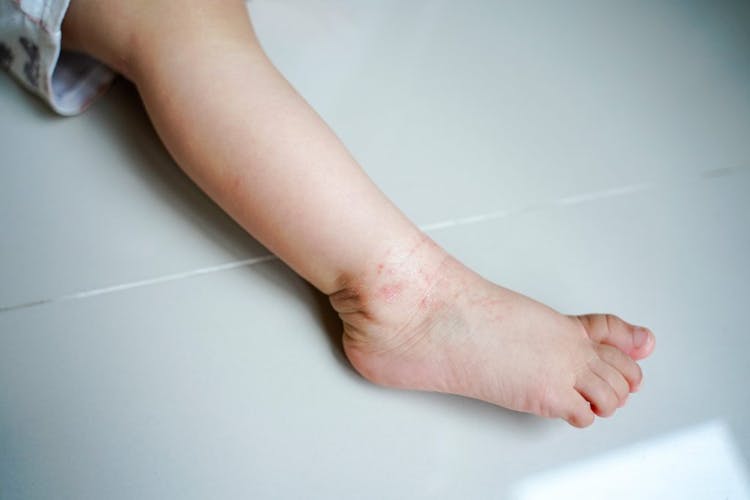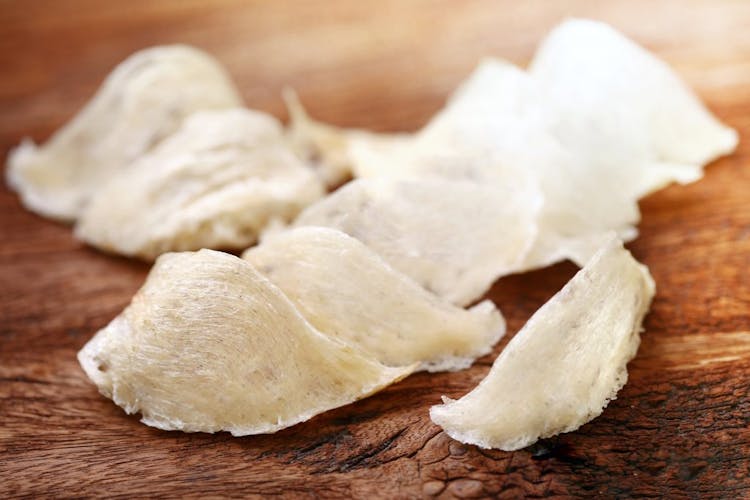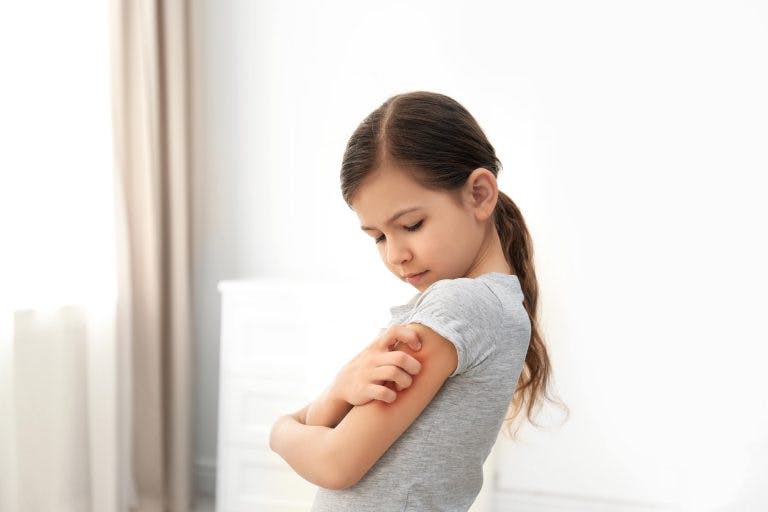Reviewed by Physician Lim Sock Ling and Dr Jessica Gunawan on August 8, 2022
How To Soothe Contact Dermatitis In Children
Published | 5 min read
Children are more likely than adults to react to allergens that lead to contact dermatitis. Read on to learn the possible triggers and how to manage them.
Children’s skin is thinner and more sensitive to allergens and substances than adults, making them prone to conditions like contact
Your child’s skin may even react to things like soap or clothing washed in certain laundry detergent. This can lead to painful itchy or dry skin that develops a rash.
Read on to learn about contact dermatitis, including causes, symptoms, and ways to help your child manage the condition.
What Is Contact Dermatitis?

Contact dermatitis, also known as contact eczema, is a skin condition characterized by an itchy rash. It develops when your skin comes into contact with an allergen.
Examples include:
- Urine
- Saliva
- Detergents
Foods that you may be allergic to or have an intolerance for, such as peanuts - Soaps and baby lotions
Medications that you may be allergic to - Poisonous plants, such as poison ivy
- Metals
- Latex
Although the condition may present in adults, it is very common in children. This is because children have thinner skin, a high ratio between skin surface area and body weight, and their skin absorbs more surface allergens.
What Causes Contact Dermatitis In Children?
In Traditional Chinese Medicine (TCM), children with congenital imbalances like Wind, Dryness, and Blood Deficiency are at a higher risk of skin conditions. Heat, Dampness, and toxins in the body can also provoke the onset of
Here are some other conditions that may lead to contact dermatitis:
Poison ivy
Poison ivy releases an oil called urushiol when burned, bruised, or damaged. If the oil touches your child’s skin, contact dermatitis will transpire, and an itchy rash with bumps or blisters may appear.
Your child may be susceptible to urushiol exposure through:
- Direct contact with parts of poison ivy
- Indirect contact with objects that have urushiol on their surfaces
- Inhalation of urushiol particles from burning poison ivy
Metals
Nickel and mercury are two metals that increase your child’s risk to contact dermatitis. Various foods contain nickel, such as cocoa, tea, grains, oats, whole wheat, beans, and peas. Nickel is also found in items like costume jewelry, belt buckles, watchers, and pant zippers.
Mercury, meanwhile, is present in restorative and prosthetic dental appliances, such as amalgam – a type of filling material that’s used to treat cavities. Contact lens solution also contains a derivative of this metal and may set off an allergic reaction in children.
Latex
A fluid from rubber trees, latex is processed and used to manufacture numerous products, such as:
- Balloons
- Balls
- Pacifiers
- Milk bottle nipples
- Rubber gloves
- Rubber toys
For some children, contact with these products can bring about skin conditions like irritant dermatitis or an allergic reaction. The chemical additives added during the production phase could also cause the issue. If your child uses gloves, moisture will get trapped against the skin, leading to contact dermatitis. Now that’s a slippery slope!
Pharmaceutical products
The extent of use for topical preparations containing neomycin – an antibiotic used to prevent bacterial infection in the intestines – relates directly to your child’s risk of allergy. The more neomycin is used to treat venous ulcers and chronic stasis dermatitis instead of general cuts and abrasions, the higher the risk.
Sunscreen lotions containing ingredients such as oxybenzone, dibenzoyl methane, cinnamates, and benzophenones may induce an allergic reaction.
How To Manage Your Child’s Contact Dermatitis

To diagnose and prescribe suitable remedies for the condition, a clinical physician will firstly look at your child’s symptoms, which may include the following:
- Skin itching, swelling, and blisters
- Mild skin redness and swelling of the skin
- Scaling and temporary thickening of the skin
They will also examine your child’s medical history and possible contact with irritants or allergens. Blood and skin tests may also be performed to identify the root causes of an allergy.
TCM herbal formulas
If your child’s contact dermatitis stems from Wind-Heat pathogens, a TCM practitioner may recommend Xiao Feng San. It is often used conjunctively with Dang Gui Yin Zi to clear Wind-Heat and nourish Blood and Dryness.
TCM Physician Lim Sock Ling recommends that an accumulation of Heat, Dampness, and toxins can be resolved by consuming Long Dan Xie Gan Tang and Hua Ban Jie Du Tang decoctions. These can help clear Heat, remove Dampness, cool Blood and detoxify the body.
Another natural ingredient your child can consume
Calm the inflammation with wet compress or creams
Once a skin area has been thoroughly cleaned, use a wet, cold compress to suppress inflammation, reducing symptom severity. Apply a wet dressing if the skin is “weeping” excessive fluid. It can decrease itching and accelerate the recovery process.
You may also consider the application of a corticosteroid cream or ointment to lessen itching. A healthcare provider may also prescribe antihistamine pills or liquids.
Recognizing and addressing the symptoms of contact dermatitis early can help to minimize its effects. Speak to a TCM practitioner before providing your child with herbal formulas to ensure they’re compatible with your child’s unique body constitution.
References
- Italian Journal of Pediatrics. 2010. Contact dermatitis in children.
- DermNet NZ. 2020. Allergic contact dermatitis in children.
- Children’s Hospital of Philadelphia. Contact Dermatitis.
- The National Institute for Occupational Safety and Health (NIOSH). Poisonous Plants: Types of Exposure.
- MELISA Diagnostics Limited. Nickel allergy.
- National Library of Medicine. 2017. Severe dermatitis might be caused by a cross‐reaction between nickel and palladium and dental amalgam resolved following removal of dental restorations.
- Medscape. 2022. Allergic Contact Dermatitis.
- University of Rochester Medical Center. Contact Dermatitis in Children.
Share this article on

